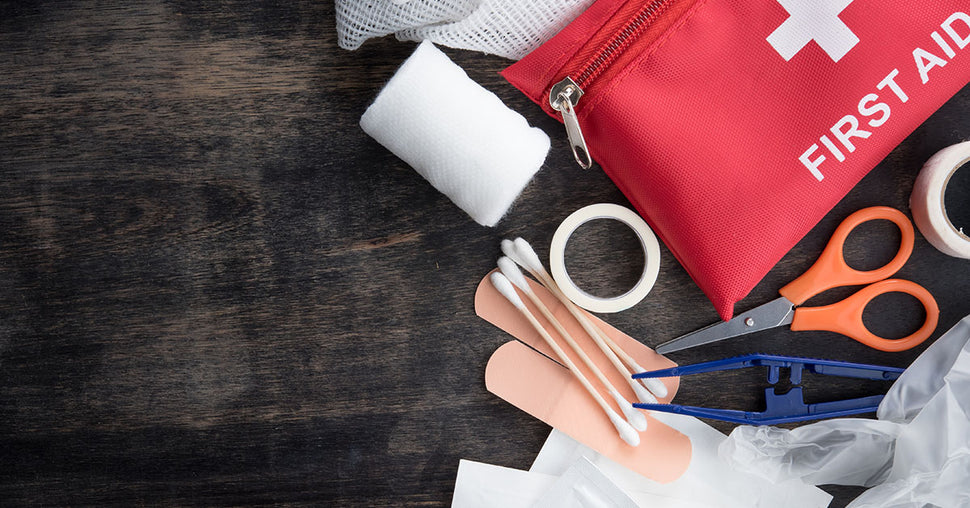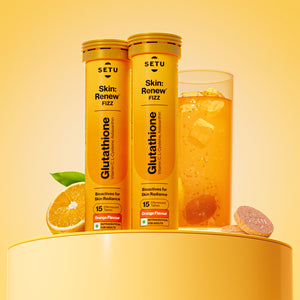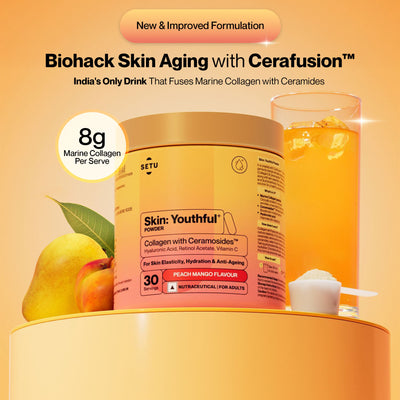The ABCs Of First Aid Action
04 Aug 2020
As kids, we’ve always relied on mommy’s first aid skills, where band-aids and kisses could make everything right. As time went by, we learned a few basic skills ourselves, to heal a pesky cut, staunch a bloody nose, or treat a minor burn. Facilitating first-aid at a domestic level is one thing, but stepping up during an emergency is a whole other story – a story that can starkly shape the difference between life and death.
Knowing how to respond to an emergency medical situation can save lives. More than a skill, saving lives is a mindset. First aid training can come handy during emergencies – it can be effective, at least till help arrives. If you’re planning to learn these lifesaving skills, there’s no better time than now. During times of a pandemic like this, first aid knowledge can make you self-sufficient and lessen the need to visit the doctor for minor issues.
Here are a few quick responses to an emergency situation. We’ve also compiled a list of essentials that you must keep in your kit.

Dealing With A Medical Emergency Like A Pro
Quick Responses
- Always Disinfect: Open wounds and cuts can cause infections and spread illness. Always disinfect the area of injury before bandaging it .
- Stop The Bleeding: If a wound is bleeding, apply pressure on it to stop bleeding before wrapping it up with a bandaid .
- Immobilize Injured Area: In case of trauma and broken bones, make sure to immobilize the injured area. Do not apply weight or pressure on it, and do not try to reset or stint the bone yourself .
- When In Doubt, Call Emergency: When someone is extremely injured and needs professional help, if you think somebody needs extra help, or if you can’t figure out what to do – immediately call the emergency hotline.
Other First Aid Tips
Heat Exhaustion:
Dealing with heat exhaustion or heat strokes is one of those first aid basics that every Indian should know. Prolonged exposure to high temperatures or engaging in rigorous activities without adequate hydration can lead to such problems with symptoms like heavy sweating, dizziness, muscle cramps, nausea, headaches, and a weak pulse.
To deal with such situations, first get the person out of the sun or heated area into the shade or a cool room. While water will never be listed in guides on how to make first aid boxes, it’s something that you should always have handy. Give the individual water to drink slowly or better still, administer an oral rehydration solution. In fact, oral rehydration solutions should be a part of any basic first aid kit if you’re traveling. You can also place a cool wet cloth on the person’s head to lower their temperature quickly.
Burns:
Burns are another common injury and it’s important to learn how to assess the severity of burns as part of basic first aid training. Minor burns can be treated effectively with first aid, by simply running cool water over the area. You can also apply gentle moisturizers like aloe vera, which you should have on you if you’ve learned how to make a first aid box. You can also administer a painkiller and make sure to keep the person out of sunlight and away from heat.
Major burns are a lot more serious and require emergency medical care. Until first responders arrive, simply use loose materials as a protective covering to lower the risk of infection. Although you may be tempted to apply a burn ointment from your DIY first aid box no cream or ointment should be applied in such cases.
Cardiac Arrest:
A heart attack or cardiac arrest is perhaps the most feared of all medical emergencies, but it’s one that you should be prepared for. Cardiopulmonary resuscitation (CPR) is the most useful procedure and of those first aid basics that everyone ought to learn. Whether the victim has suffered cardiac arrest or drowning, CPR can be lifesaving. To perform CPR, you don’t even need to know how to make a first aid box, however, you need to seek training at a medical center or from your doctor because there’s just no substitute for hands on training. Don’t go by what you see in the movies!
Allergic Reactions:
Allergic reactions are another common problem that we sometimes don’t take seriously enough. However, some allergic reactions like anaphylaxis can be life threatening. This is why when you’re learning how to make a first aid kit it’s important to include antihistamines as well as an epinephrine autoinjector if possible. Before you attempt to procure and use an epinephrine autoinjector, ask your doctor for guidance on how to administer the same.
National Emergency Number – 112
Ambulance – 102
Children In Difficult Situations – 1098
- Always Restock First-Aid Kit: After using some of the essential items in the first aid kit, make sure you replace them as soon as possible, as you never know when you might need it next.
Make Your Own First Aid Kit
It’s better to make your own kit than to purchase one, as you know the medical history of your family. Try to keep the kit small and simple. Make sure whatever you use, suits every member of your family and that no one is allergic to any medicine or ointment.
If you’re preparing a kit for traveling, keep it in a water-resistant container or bag. Nylon bags, makeup cases, ziplock bags, spill-proof fridge containers serve well for the purpose. Keep wound supplies and medicines in separate bags to avoid search hassle.

Must-Have First Aid Kit Essentials
Home
- Adhesive tape
- Anesthetic spray or lotion (for itching rashes and insect bites)
- Sterile gauze pads (to cover and clean wounds, as a soft eye patch)
- Ace bandages (to wrap sprained or strained joints, etc)
- Adhesive bandages
- Oral antihistamines or loratadine (for allergic reactions, itching rashes)
- Aloe vera topical gel/cream (for burn relief)
- Aspirin (for mild pain)
- Antacid (for indigestion)
- Cough medication
- Antiseptic agent (for cleaning wounds)
- Polysporin antibiotic cream (to apply to simple wounds)
- Non-Adhesive pads (for covering wounds and burns)
- Safety pins or tweezers (for splinter removal and for securing triangular bandage sling)
- Scissors
- Thermometer
- Alcohol wipes or ethyl alcohol
- Nasal spray decongestant (for nasal congestion)
- Nonadhesive wound pads
Travel kit :
- Adhesive tape
- Sterile gauze pads
- Antacid (for indigestion)
- Antidiarrheal
- Antihistamine cream
- Antiseptic solution (for cleaning wounds and hands)
- Aspirin (for mild pain)
- Adhesive bandages
- Diphenhydramine or loratadine
- Topical corticosteroids, such as over the counter Hydrocortisone 1% (to treat rashes)
- Aloe vera topical gel/cream (for burn relief)
- A book on first aid
- Cigarette lighter (to sterilize instruments, to be able to start a fire in the wilderness, to keep warm, and to make smoke to signal for help)
- Cough medication
- Dental kit (for broken teeth, etc)
- Exam gloves
- Small flashlight
- Ibuprofen
- Soap
- Antibiotic ointment
- Alcohol wipes or ethyl alcohol
- Thermometer
- Insect repellant
- Knife (small Swiss Army-type)
- Moleskin (to apply to blisters or hot spots)
- Nasal spray decongestant (for nasal congestion from allergies or colds)
- Nonadhesive wound pads
- Personal medications and items
- Plastic resealable bags
- Pocket mask for CPR
- Safety pins or tweezers (for splinter removal and for securing triangular bandage sling)
- Scissors
- Sunscreen with an SPF of 30 or more
- Thermometer
- A list of emergency phone numbers
Where The First Aid Kit Must Be Kept
It is important to keep your first aid kit at a very accessible location. The best place for it would be the kitchen, as most common, minor accidents like burns and cuts happen in the kitchen. If you’ve been keeping your kit in the bathroom, it’s time you take it out of there and place it somewhere else, as the bathroom has too much humidity that can shorten the life of some essential items in the kit .
When you’re traveling, especially if it’s a place that has no medical center nearby, make sure that you carry a first aid kit and keep it very handy, packed in a waterproof bag.
Skin: Renew - Glutathione - Orange Flavour
- ₹1,996
- ₹1,996
-
₹2,600 - ( 23% OFF)
Categories
- Choosing a selection results in a full page refresh.
- Press the space key then arrow keys to make a selection.
this is the sidecart











